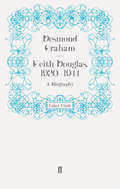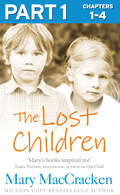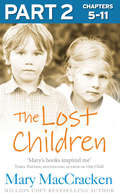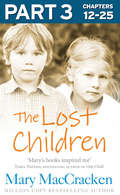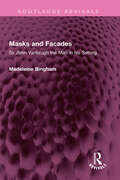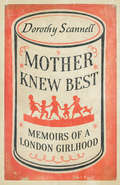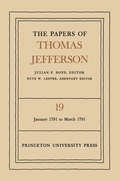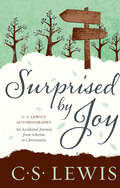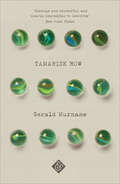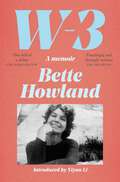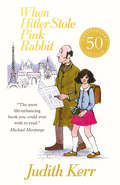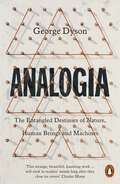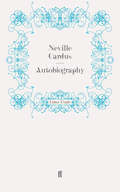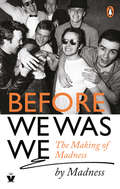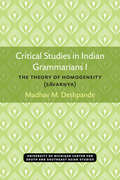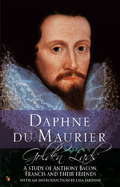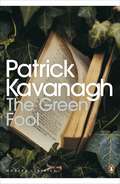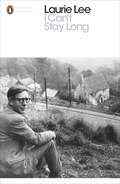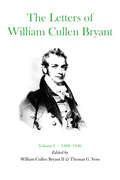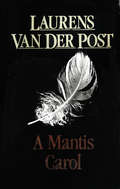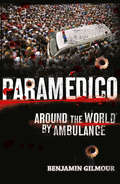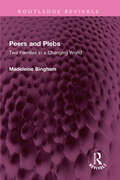- Table View
- List View
Keith Douglas, 1920-1944: A Biography
by Dr Desmond GrahamKeith Douglas was almost certainly the greatest poet of the Second World War. He was killed in Normandy three days after D-Day. He was only twenty-four. His short life was one of contradictions: the gifted artist and romantic, always in love with the wrong girl also enjoyed soldiering and was quick to volunteer at the beginning of the war. The brave and resourceful tank commander with the Sherwood Rangers in the Western Desert, in the campaign of which his Alemein to Zem Zem is the classic account, was also an outspoken critic of the military establishment and often in trouble with his superiors. There was always another side to Keith Douglas: difficult, even arrogant, he was at the same time, as Desmond Graham, observes in his original preface, 'generous, sensitive to the difficulties of others, remorselessly honest, energetic, and passionately, innocently open.' Douglas made in his brief life some friends who never forgot him, and whose memories of him have contributed much to this book.For this biography, Desmond Graham had access to much private and unpublished material. From that, interviews, Keith Douglas' own poems, letters and drawings emerges a definitive biography.'An almost unqualified success . . . Mr Graham has used his material with great skill and tact.' Roy Fuller'It is difficult to imagine a better biography than this being written about Keith Douglas . . . Desmond Graham provides us with an astonishing amount of information.' Stephen Spender'Extremely well-done . . It is written with authority and it will be standard.' Peter Levi'Sumptuously evocative' John Carey
The Lost Children: Part 1 of 3
by Mary MacCrackenThe Lost Children can either be read as a full-length eBook or in 3 serialised eBook-only parts. This is PART 1 of 3 (Chapters 1-4 of 25). You can read Part 1 two weeks ahead of release of the full-length eBook and paperback.
The Lost Children: Part 2 of 3
by Mary MacCrackenThe Lost Children can either be read as a full-length eBook or in 3 serialised eBook-only parts. This is PART 2 of 3 (Chapters 5-11 of 25). You can read Part 2 one week ahead of release of the full-length eBook and paperback.
The Lost Children: Part 3 of 3
by Mary MacCrackenThe Lost Children can either be read as a full-length eBook or in 3 serialised eBook-only parts. This is PART 3 of 3 (Chapters 12-25 of 25). You can read Part 3 on release of the full-length eBook and paperback.
Masks and Facades: Sir John Vanbrugh the Man in his Setting (Routledge Revivals)
by Madeleine BinghamFirst published in 1974, Masks and Facades paints an authentic picture of John Vanbrugh as a man of character, talent, wit and charm, moving in an age where patronage held the key to worldly advancement. Yet against a backcloth of theatre, of the great palaces of the aristocracy, and the sycophancy which Court, rank and riches demanded, he always remained his own man. Whether imprisoned in the Bastille as the ‘guest’ of Louis XIV, or in his long contest with the insufferable Sarah, Duchess of Marlborough over the building of Blenheim, he invariably retained his balance and good humour, and as he said of one of his own buildings, ‘presented a manly appearance.’ This book will be of interest to students of history and literature.
Masks and Facades: Sir John Vanbrugh the Man in his Setting (Routledge Revivals)
by Madeleine BinghamFirst published in 1974, Masks and Facades paints an authentic picture of John Vanbrugh as a man of character, talent, wit and charm, moving in an age where patronage held the key to worldly advancement. Yet against a backcloth of theatre, of the great palaces of the aristocracy, and the sycophancy which Court, rank and riches demanded, he always remained his own man. Whether imprisoned in the Bastille as the ‘guest’ of Louis XIV, or in his long contest with the insufferable Sarah, Duchess of Marlborough over the building of Blenheim, he invariably retained his balance and good humour, and as he said of one of his own buildings, ‘presented a manly appearance.’ This book will be of interest to students of history and literature.
Mother Knew Best: Memoirs of a London Girlhood (Dorothy Scannell's East End Memoirs)
by Dorothy Scannell‘Cheer up,’ said Mother. ‘Don’t make your unhappy life miserable.’Before Jennifer Worth and other East End memoirists, there was Dorothy ‘Dolly’ Scannell.In the East End of Dolly’s childhood, people met poverty and hardship with unfailing optimism and humour. Dolly grew up with nine brothers and sisters, her father - a plumber earning ?2 a week and a man who believed that ‘all aristocratic men were disease-ridden and possessed bald-headed wives because of the rich food and wine they consumed’ - and of course Mother, who cared for her large brood with rare wisdom, laughter, and unbounded love.The menagerie also occasionally included members of the animal kingdom, but no mere cats and dogs - instead there were chinchillas, cannibalistic chickens, a ferocious eel kept in a pail of water, and even, eventually, the pride of mother’s wardrobe, a kangaroo-fur coat.With the sure touch of a natural story-teller, who combines a perfect memory with a true writer’s gift, Dolly vividly recreates her childhood world: the streets in which she played - and the playground where she was rescued from a child molester; the local shops and the adulterated goods sold within; the new house that her father was going to pay for with his ever-madder schemes to make a fortune, such as a revolutionary kind of truss.‘A proper treat, I can tell you, bright as Pearlie buttons, colourful as a street market’ Evening Standard
The Papers of Thomas Jefferson, Volume 19: January 1791 to March 1791
by Thomas Jefferson Julian P. BoydVolume 19, covering the final critical weeks of the First Congress, reveals Washington and Jefferson in the closest and most confidential relationship that existed at any time during their official careers. It opens with the proclamation announcing the exact location of the Federal District, an unexplained choice made in the utmost secrecy by the President in consultation with the Secretary of State some weeks before Washington toured the upper Potomac in an ostensible journey to inspect rival sites and to encourage competition for the location of the national capital. It includes the politically related question of the chartering of the Bank of the United States, on which Jefferson delivered his famous opinion challenging its constitutionality. But the conflict with Hamilton over the Bank, important as it was, did not bring the two men on the public stage as contestants. Instead, the first focusing of public attention on the breach in the administration occurred with the publication of Jefferson's report on the whale and cod fisheries. This widely disseminated report is here presented in a context showing that, after Hamilton declined to cooperate in reciprocating the favors France had granted to American trade, Jefferson deliberately and publicly challenged the Hamiltonian opposition. In unusually blunt language, his report called for commercial retaliation against Great Britain, thus causing a sensation both in the ... ministry. This volume shows Jefferson's concern over the growing discontent in the South and West over fiscal and other policies of the national government, his resistance to interested promotion of consular appointments in business circles, his grappling with the political and constitutional questions concerning the admission of Kentucky and Vermont, his involvement in the political consequences of the death of Franklin that affected even the proceedings of the American Philosophical Society, his cautious relationship with Tench Coxe as a source of statistical information which the Secretary of the Treasury failed to supply, and his report to Washington on a judicial appointment that brought on both embarrassment and constitutional questions. Once Congress had dispersed, Jefferson was able to turn his attention to long-neglected private concerns and to the correspondence that gave him most satisfaction, that with the family at Monticello.
The Papers of Thomas Jefferson, Volume 19: January 1791 to March 1791 (PDF) (Papers of Thomas Jefferson #19)
by Thomas Jefferson Julian P. BoydVolume 19, covering the final critical weeks of the First Congress, reveals Washington and Jefferson in the closest and most confidential relationship that existed at any time during their official careers. It opens with the proclamation announcing the exact location of the Federal District, an unexplained choice made in the utmost secrecy by the President in consultation with the Secretary of State some weeks before Washington toured the upper Potomac in an ostensible journey to inspect rival sites and to encourage competition for the location of the national capital. It includes the politically related question of the chartering of the Bank of the United States, on which Jefferson delivered his famous opinion challenging its constitutionality. But the conflict with Hamilton over the Bank, important as it was, did not bring the two men on the public stage as contestants. Instead, the first focusing of public attention on the breach in the administration occurred with the publication of Jefferson's report on the whale and cod fisheries. This widely disseminated report is here presented in a context showing that, after Hamilton declined to cooperate in reciprocating the favors France had granted to American trade, Jefferson deliberately and publicly challenged the Hamiltonian opposition. In unusually blunt language, his report called for commercial retaliation against Great Britain, thus causing a sensation both in the ... ministry. This volume shows Jefferson's concern over the growing discontent in the South and West over fiscal and other policies of the national government, his resistance to interested promotion of consular appointments in business circles, his grappling with the political and constitutional questions concerning the admission of Kentucky and Vermont, his involvement in the political consequences of the death of Franklin that affected even the proceedings of the American Philosophical Society, his cautious relationship with Tench Coxe as a source of statistical information which the Secretary of the Treasury failed to supply, and his report to Washington on a judicial appointment that brought on both embarrassment and constitutional questions. Once Congress had dispersed, Jefferson was able to turn his attention to long-neglected private concerns and to the correspondence that gave him most satisfaction, that with the family at Monticello.
Surprised by Joy: The Shape Of My Early Life (The\c.s. Lewis Signature Classics Ser.)
by C. LewisFor many years an atheist, C. S. Lewis vividly describes the spiritual quest that convinced him of the truth and reality of Christianity, in his famous autobiography.
Tamarisk Row
by Gerald MurnaneClement Killeaton transforms his father’s gambling, his mother’s piety, his fellow pupils' cruelty and the mysterious but forbidden attractions of sex into an imagined world centred on horse-racing and played out in the dusty backyard of his home, across the landscapes of the district, and the continent of Australia. An unsparing evocation of a Catholic childhood in a country town in the late 1940s, Tamarisk Row’s lyrical prose is charged with the yearning, boredom, fear and fascination of boyhood.First published in Australia in 1974, and previously unpublished in the UK, Tamarisk Row is Gerald Murnane’s debut novel, and in many respects his masterpiece.
W-3: A Memoir
by Bette Howland'W-3 is one hell of a debut' Lucy Scholes, Paris Review'Remarkably perceptive and wise' Katy Waldman, New Yorker'Howland is finally getting the recognition that she deserves' Sarah Hughes, iNewsW-3 is a small psychiatric ward in a large university hospital, a world of pills and passes dispensed by an all-powerful staff, a world of veteran patients with grab-bags of tricks, a world of disheveled, moment-to-moment existence on the edge of permanence.Bette Howland was one of those patients. In 1968, Howland was thirty-one, a single mother of two young sons, struggling to support her family on the part-time salary of a librarian; and labouring day and night at her typewriter to be a writer. One afternoon, while staying at her friend Saul Bellow’s apartment, she swallowed a bottle of pills. W-3 is both an extraordinary portrait of the community of Ward 3 and a record of a defining moment in a writer’s life. The book itself would be her salvation: she wrote herself out of the grave.This beautiful edition features an original introduction by Yiyun Li, author of Where Reasons End.‘For a long time it had seemed to me that life was about to begin—real life. But there was always some obstacle in the way. Something to be got through first, some unfinished business; time still to be served, a debt to be paid. Then life could begin. At last it had dawned on me that these obstacles were my life.’
When Hitler Stole Pink Rabbit (Essential Modern Classics)
by Judith KerrPartly autobiographical, this is first of the internationally acclaimed trilogy by Judith Kerr telling the unforgettable story of a Jewish family fleeing from Germany at the start of the Second World War
Analogia: The Entangled Destinies of Nature, Human Beings and Machines
by George DysonHow did we end up in a world where humans coexist with technologies we can no longer fully control or understand? George Dyson plots an unexpected course through the past 300 years to reveal the hidden connections that underpin our digital age, ending with a premonition of what lies ahead. From an eighteenth-century Russian voyage across the North Pacific, to the mirror signals that heralded the age of digital telecommunications and the invention of the vacuum tube, Analogia interweaves historical adventure with scientific insight in a deeply personal story that frames the pursuit - and cost - of the digital revolution in a captivating new light.
Autobiography: Autobiography
by Neville CardusAutobiography was first published in 1947 and was described by J. B. Priestley as 'one of the best pieces of writing that ever found a way to our Book Society. He is a writer who has learned how to write and the result is glorious.' Sir Neville Cardus is best remembered as a writer on both cricket and music and during his lifetime achieved an unparalleled reputation as one of England's greatest journalists on these two very different subjects. Born in Rusholme in Manchester Cardus carved out an international reputation for himself by his own ability, efforts and imagination and created, as his biographer Christopher Brookes put it, 'a beguiling personal legend in the course of a career which extended over fifty years.' 'This is a very, very good book. Cricket and music - how he makes both these worlds pulsate, life comic as well as life magnificent.' Robert Lynd'A superb work by a master of English.' Wilfred Pickles
Before We Was We: Madness by Madness
by Lee Thompson Mike Barson Mark Bedford Chris Foreman Graham McPherson Cathal Smyth Dan WoodgateIn Before We Was We, their first official book, Madness tell us how they became them. A story of seven originals, whose collective graft, energy and talent took them from the sweaty depths of the Hope & Anchor's basement to the Top of the Pops studio. In their own words they each look back on their shared adventures. Playing music together, riding freight trains, spraying graffiti and stealing records. Walking in one another's footsteps by day and rising up through the city's exploding pub music scene by night. Before We Was We is irreverent, funny and full of character. Just like them.
Critical Studies in Indian Grammarians I: The Theory of Homogeneity (Savar?ya) (Michigan Series In South And Southeast Asian Languages And Linguistics)
by Madhav M. DeshpandeIn the historical study of the Indian grammarian tradition, a line of demarcation can often be drawn between the conformity of a system with the well-known grammar of Pa?ini and the explanatory effectiveness of that system. One element of Pa?ini’s grammar that scholars have sometimes struggled to bring across this line of demarcation is the theory of homogeneity, or savar?ya, which concerns the final consonants in Pa?ini’s reference catalog, as well as phonetic similarities between sounds. While modern Sanskrit scholars understand how to interpret and apply Pa?ini’s homogeneity, they still find it necessary to unravel the history of varying interpretations of the theory in subsequent grammars. Madhav Deshpande’s The Theory of Homogeneity provides a thorough account of the historical development of the theory. Proceeding first to study this conception in the Pa?inian tradition, Deshpande then passes on to other grammatical systems. Deshpande gives attention not only to the definitions of homogeneity in these systems but also the implementation of the theory in those respective systems. Even where definitions are identical, the concept may be applied quite differently, in which cases Deshpande examines by considering the historical relationships among the various systems.
Golden Lads: A Study of Anthony Bacon, Francis and Their Friends (Virago Modern Classics #655)
by Daphne Du MaurierPrior to the publication of this biography, the elusive Anthony Bacon was merely glimpsed in the shadow of his famous younger brother, Francis. A fascinating historical figure, Anthony Bacon was a contemporary of the brilliant band of gallants who clustered round the court of Elizabeth I, and he was closely connected with the Queen's favourite, the Earl of Essex. He also worked as an agent for Sir Francis Walsingham, the Queen's spymaster, living in France where he became acquainted with Henri IV and the famous essayist Michel de Montaigne. It was in France that du Maurier discovered a secret that, if disclosed during Bacon's lifetime, could have put an end to his political career . . . Du Maurier did much to shed light on matters that had long puzzled historians, and, as well as a consummate exercise in research, this biography is also a strange and fascinating tale.
The Green Fool (Penguin Modern Classics)
by Patrick KavanaghMy part of Ireland had a poet at one time, a poor ragged fellow whom no respectable person whom no respectable person would be seen talking to, but he left doors open as he passed. Time hardly mattered in the village of Mucker, the birthplace of poet and writer Patrick Kavanagh. Full of wry humour, Kavanagh's unsentimental and evocative account of his Irish rural upbringing describes a patriarchal society surviving on the edge of poverty, sustained by the land and an insatiable love of gossip. There are tales of schoolboy skirmishes, blackberrying and night-time salmon-poaching; of country-weddings and fairs, of political banditry and religious pilgrimages; and of farm-work in the fields and kicking mares.Kavanagh's experiences inspired him to write poetry which immortalized a fast-disappearing way of life and brought him recognition as one of Ireland's great poets.
I Can't Stay Long (Penguin Modern Classics)
by Laurie Lee'They are memorials to times and countries whose best is probably past and gone . . . I was lucky to have known them when I did, before darkness began to fall from the air.'In this much-loved volume, a mature Laurie Lee returns to the Gloucestershire childhood familiar to readers of Cider with Rosie, a world lost even at the time of writing to the march of twentieth-century technology. Lee also explores the post-war travels that took him to, amongst others, the Netherlands, Tuscany, Mexico and the West Indies. With pieces dating from the 1940s and 50s, Lee captures a world now for ever changed by war and mass tourism, 'when to be a traveller was not yet to be just a labelled unit'.
The Letters of William Cullen Bryant: Volume I, 1809–1836
by William Cullen BryantThis is the only collection ever made of Bryant's letters, two-thirds of which have never before been printed. Their publication was foreseen by the late Allan Nevin as "one of the most important and stimulating enterprises contributory to the enrichment of the nation's cultural and political life that is now within range of individual and group effort.William Cullen Bryant (1794–1878) was America's earliest national poet. His immediate followers—Longfellow, Poe, and Whitman—unquestionably began their distinguished careers in imitation of his verses. But Bryant was even more influential in his long career as a political journalist, and in his encouragement of American art, from his lectures at the National Academy of Design in 1828 to his evocation of the Metropolitan Museum of Art in 1870. Between the appearance of his first major poem, "Thanatopsis," in 1817, and his death sixty-one years later at the age of eight-three, Bryant knew and corresponded with an extraordinary number of eminent men and women. More than 2,100 of his know letters have already been recovered for the present edition.When William Cullen Bryant signed the first of 314 letters in the present volume, in 1809, he was a frail and shy farm boy of fourteen who had nonetheless already won some fame as the satirist of Thomas Jefferson. When he wrote the last, in 1836, he had become the chief poet of his country, the editor of its principal liberal newspaper, and the friend and collaborator of its leading artists and writers. His collected poems, previously published at New York, Boston, and London, were going into their third edition. His incisive editorials in the New York Evening Post were affecting the decisions of Andrew Jackson's administration. His poetic themes were beginning to find expression in the landscape paintings of Robert Weir, Asher Durand, and Thomas Cole.The early letters gathered here in chronological order give a unique picture of Cullen Bryant's youth and young manhood: his discipline in the classics preparatory to an all-too-brief college tenure; his legal study and subsequent law practice; the experiments with romantic versification which culminated in his poetic masterpieces, and those with the opposite sex which led to his courtship and marriage; his eager interest in the politics of the Madison and Monroe Presidencies, and his subsequent activities as a local politician and polemicist in western Massachusetts; his apprenticeship as magazine editor and literary critic in New York City, from which his later eminence as journalist was the natural evolution; the lectures on poetry and mythology which foreshadowed a long career as occasional orator; the collaboration in writing The Talisman, The American Landscape, and Tales of Glauber-Spa, and in forming the National Academy of Design, and the Sketch Club, which brought him intimacy with writers, artists, and publishers; his first trip to the Aemrican West, and his first long visit to Europe, during which he began the practice of writing letters to his newspaper which, throughout nearly half a century, proved him a perceptive interpreter of the distant scene to his contemporaries.Here, in essence, is the first volume of the autobiography of one whom Abraham Lincoln remarked after his first visit to New York City in 1860, "It was worth the journey to the East merely to see such a man." And John Bigelow, who of Bryant's many eulogists knew him best, said in 1878 of his longtime friend and business partner, "There was no eminent American upon whom the judgment of his countrymen would be more immediate and unanimous. The broad simple outline of his character and career had become universally familiar, like a mountain or a sea."
A Mantis Carol
by Sir Laurens Van Der PostPresented together now for the first time, Laurens van der Post's collected writings will reveal as never before the fullness of his perceptive, wise and remarkably consistent vision. In all of them his inspiration has been that of an adventurous pioneer exploring not just the outward aspects of a turbulent and troubled world but, at a deeper level, the patterns and paradoxes of human life, the myths and dreams of the human mind, the values and cultures of different peoples, the elusive springs of our own people.
Peers and Plebs: Two Families in a Changing World (Routledge Revivals)
by Madeleine BinghamFirst published in 1975, Peers and Plebs is about the rise and fall of two families, one aristocratic and the other plebian of origin. It forms a microcosm of a small section of social history during sixty important years, 1878-1938. It shows how British society, though veined with snobbery, has remained fluid enough to adapt itself to change and necessity without, so far, a violent revolution. The author wittily reveals how this was achieved: how when it came to the nitty-gritty no class has been afraid to marry into another, despite snobbery or even religious prejudice. This book will be of interest to students of history and literature.
Peers and Plebs: Two Families in a Changing World (Routledge Revivals)
by Madeleine BinghamFirst published in 1975, Peers and Plebs is about the rise and fall of two families, one aristocratic and the other plebian of origin. It forms a microcosm of a small section of social history during sixty important years, 1878-1938. It shows how British society, though veined with snobbery, has remained fluid enough to adapt itself to change and necessity without, so far, a violent revolution. The author wittily reveals how this was achieved: how when it came to the nitty-gritty no class has been afraid to marry into another, despite snobbery or even religious prejudice. This book will be of interest to students of history and literature.
